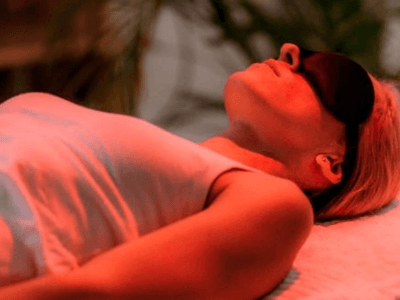Therapeutic Benefits of Red Light Therapy
Red light therapy (RLT), also known as photobiomodulation, has gained significant attention for its potential health benefits. This non-invasive treatment uses red or near-infrared light to promote healing and rejuvenation in various tissues. Here, we explore the diverse benefits of red light therapy, supported by recent scientific research.

Skin Health and Anti-Aging
One of the most well-documented benefits of red light therapy is its positive impact on skin health. RLT has been shown to improve skin complexion, reduce wrinkles, and enhance overall skin appearance. The therapy works by stimulating collagen production, which is essential for maintaining skin elasticity and reducing the appearance of fine lines and wrinkles. A study conducted by researchers found that red light therapy significantly increased collagen density, resulting in smoother and more youthful-looking skin.
Moreover, red light therapy can accelerate wound healing and reduce inflammation, making it beneficial for treating conditions such as acne, rosacea, and psoriasis. The anti-inflammatory properties of red light help calm irritated skin and promote a healthier complexion.
Muscle Recovery and Pain Relief
Athletes and fitness enthusiasts have turned to red light therapy to aid in muscle recovery and pain relief. The therapy promotes faster healing of muscles and tissues by enhancing blood flow and reducing oxidative stress. Studies have shown that RLT can decrease muscle soreness and improve muscle performance, making it a valuable tool for post-exercise recovery.
Additionally, red light therapy has been effective in managing chronic pain conditions such as arthritis and fibromyalgia. By reducing inflammation and stimulating cellular repair processes, RLT provides a non-pharmacological option for pain management.

Mental Health Benefits
Red light therapy has also shown promise in improving mental health, particularly in reducing symptoms of depression and anxiety. Seasonal Affective Disorder (SAD), a type of depression that occurs during the winter months due to lack of sunlight, can be effectively treated with light therapy. A study found that red light therapy significantly improved mood and reduced depressive symptoms in individuals with SAD.
Furthermore, red light therapy may enhance cognitive function and reduce symptoms of anxiety. The therapy's ability to improve mitochondrial function and energy production in brain cells could contribute to better mental clarity and mood stabilization.
Improved Sleep Quality
Sleep disorders are common, and red light therapy offers a potential solution for improving sleep quality. Exposure to red light in the evening can help regulate the circadian rhythm and promote better sleep. Unlike blue light, which can disrupt sleep patterns, red light has a calming effect and can increase the production of melatonin, a hormone that regulates sleep-wake cycles.
Enhanced Athletic Performance
In addition to aiding recovery, red light therapy can also enhance athletic performance. By boosting mitochondrial function and increasing energy production in cells, RLT can improve endurance and strength. Athletes using red light therapy have reported better performance and reduced fatigue during workouts.

Cardiovascular Health
Emerging research suggests that red light therapy may benefit cardiovascular health. RLT has been shown to improve circulation, reduce blood pressure, and enhance the overall function of the cardiovascular system. These effects are likely due to the therapy's ability to stimulate nitric oxide production, which relaxes blood vessels and improves blood flow.
Hair Growth
Red light therapy is also being explored as a treatment for hair loss and promoting hair growth. The therapy stimulates hair follicles and increases blood flow to the scalp, which can enhance hair density and thickness. Clinical trials have demonstrated positive outcomes in individuals with androgenetic alopecia and other forms of hair loss.
Immune System Support
Red light therapy can strengthen the immune system by modulating cellular processes involved in immune responses. By reducing inflammation and oxidative stress, RLT supports the body's natural defense mechanisms and helps maintain overall health.
Wound Healing and Tissue Repair
The ability of red light therapy to promote wound healing and tissue repair is another significant benefit. RLT enhances the proliferation and migration of fibroblasts, which are essential cells in the wound healing process. It also increases the formation of new blood vessels (angiogenesis) and collagen synthesis, leading to faster and more effective tissue repair.
Clinical studies have demonstrated the efficacy of RLT in accelerating the healing of various types of wounds, including surgical incisions, burns, and diabetic ulcers. For instance, research published in the Journal of the American Academy of Dermatology showed that RLT significantly improved the healing rates of chronic wounds in diabetic patients.
Conclusion
Red light therapy offers a wide range of health benefits, from improving skin health and reducing pain to enhancing mental well-being, wound healing, and athletic performance. As research continues to unveil the therapeutic potential of RLT, it is becoming an increasingly popular and effective treatment option for various conditions. With its non-invasive nature and minimal side effects, red light therapy represents a promising tool for promoting health and wellness.
Works Consulted
For further reading and detailed studies, please refer to the articles and research papers available on PubMed and NCBI below:
https://pubmed.ncbi.nlm.nih.gov/18053580/
https://www.ncbi.nlm.nih.gov/geo/query/acc.cgi?acc=GSE101209
https://www.ncbi.nlm.nih.gov/medgen/643151
https://www.ncbi.nlm.nih.gov/medgen/1780338


